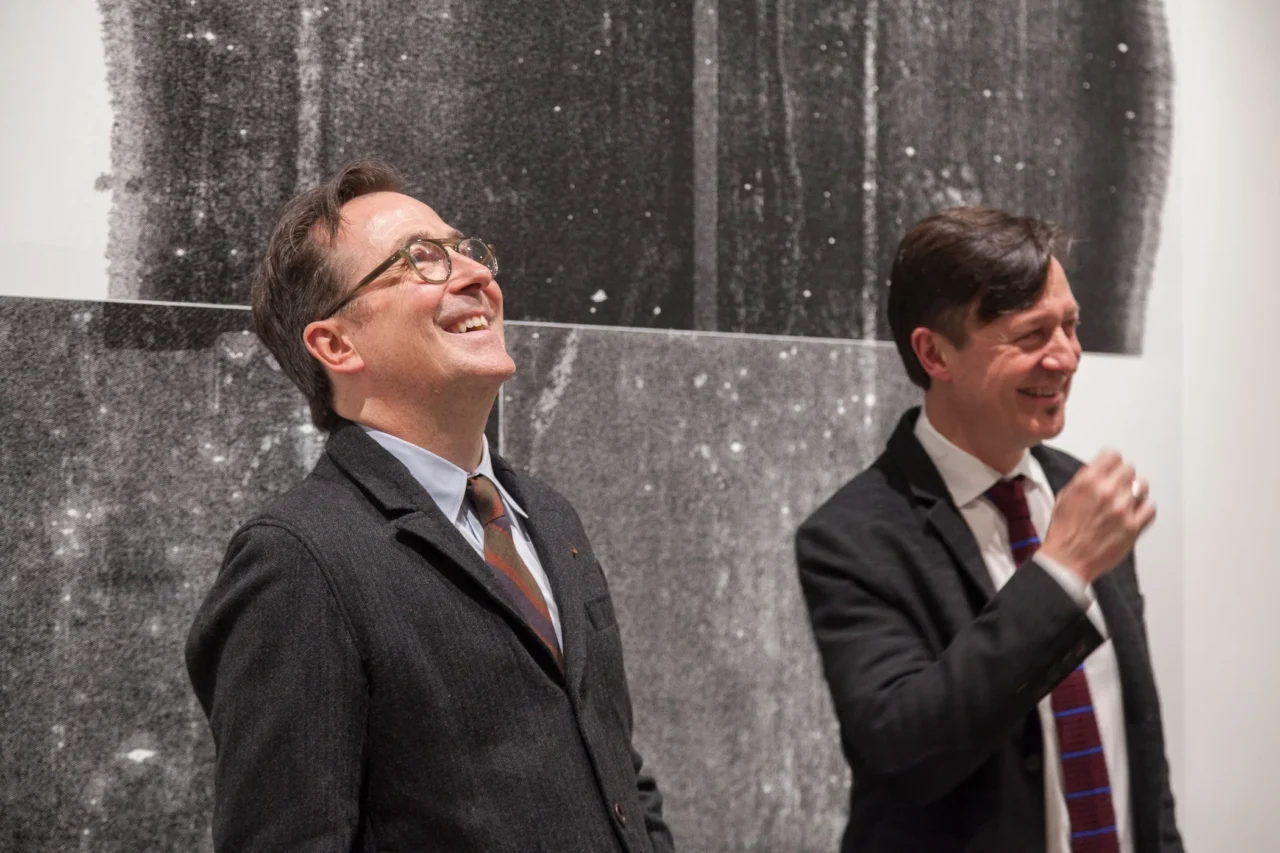Back To ESS To Work With Corbett vs. Dempsey

[photo of John Corbett and Jim Dempsey by Meg Noe]
On Thursday, July 17th, I returned to Experimental Sound Studio in Chicago to complete mixes on two projects for the Corbett vs. Dempsey label, with major assistance from John Corbett, Jim Dempsey, and engineer Alex Inglizian. The first album was for the “October Flowers for Joe McPhee” recordings made on March 17th in front of a small gathering at John and Jim’s gallery. The second set of material was for “The Magic Number” event documented almost exactly two years ago, on July 15th, 2023 at Constellation, which also included Jason Adasiewicz, Mats Gustafsson, Joe McPhee, Roscoe Mitchell, and Nate Wooley. That concert featured three improvising trios and a performance of “Quartet for Six,” a composition I wrote especially for the artists involved to feature Joe and Roscoe and to celebrate John’s 60th birthday.
Originally, “October Flowers” was composed of six pieces for tenor sax and Bb clarinet performed at the book release celebration of the memoir, “Straight Up, Without Wings: The Musical Flight of Joe McPhee”, co-written by Joe and Mike Faloon on October 18th, 2024. (https://corbettvsdempsey.com/books/straight-up-without-wings-the-musical-flight-of-joe-mcphee/)
John later hoped that I’d record the material for the CvD label, and I jumped at the chance. For the session in March, the compositions were re-sequenced to include baritone sax and bass clarinet, and five completely improvised pieces were added to the material. Both the compositions and free improvisations were deeply impacted by Joe’s album, “Tenor”, from 1977, that was a game changer regarding the course of my life. Joe was one of the audience members at the March session and his presence was monumental for me. The acoustics of the Corbett vs. Dempsey gallery were perfect for the material, the sound of the horns in the room had the feeling of the sound on “Tenor”, haunting and meditative, hanging in the air.
The mixing process for this solo music went quickly. Alex had recorded the instruments so well there was no need to use the room mics for ambience. There was a need to balance the overall volume between pieces and to sequence the compositions to include the improvisations, and to figure out the timings between tunes, but not much more than that. As the process moved forward there was a complete consensus about the programming and pacing of the material. Being on the same page with these details was more than gratifying, it felt like the four of us were hearing the music exactly the same way, making the recording seem like a true homage to Joe McPhee, one of my biggest idols as an artist and human being.
After a lunch break, John, Jim, and I returned to the studio to begin work on “The Magic Number” project that also included Jason Adasiewicz, Mats Gustafsson, Joe McPhee, Roscoe Mitchell, and Nate Wooley. We began with with my composition for the group, “Quartet for Six.” The piece had six written sections with a coda. There were seven cards indicating these composed parts. Before the performance John shuffled the deck and then selected from it at random to determine how the composition would begin. When he wanted one section of the piece to move to the next, he’d pull another card, and this would let the instrumentalists know what section of material would take place, then I would conduct the exact starting point for each section. This organizational method created what I was hoping for: complete freedom for Joe and Roscoe (the featured musicians), complete surprise regarding the overall form, while simultaneously allowing very specific parts and improvisational groupings to take place as exact pivots within the musical framework.
The performance went better than I could have imagined, though mixing the music of “Quartet for Six” was a real challenge. To work, the ensemble parts had to have emphatic clarity without drowning out the improvising that took place. The dynamics employed by the musicians were HUGE and depicting that range while making sure all the creative statements were audible and in balance was extremely difficult. Having four highly experienced listeners working together on the mix made it possible to put all the sonic pieces in order. And, like the performance itself, the recording was more than I could have hoped for too.
Along with the composed piece, there were three completely improvised trios: Joe McPhee/Roscoe Mitchell/Jason Adasiewicz; Joe McPhee/Nate Wooley/me; and Mats Gustafsson/Roscoe Mitchell/Nate Wooley. Thankfully, after all the effort that went into mixing “Quartet for Six”, these pieces were very straightforward to organize. All the trios were in dramatic contrast between each other and the sextet that ended the concert. The instrumental range felt orchestral throughout, with bass saxophone (Roscoe), tenor saxophone (Joe), vibraphone (Jason), trumpet (Nate), flute and baritone (Mats), Bb & bass clarinet, tenor (me), feeling much more expansive than would be possible with six musicians. Truth is, with musicians and collaborators like this, almost anything is possible.